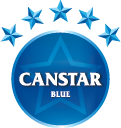Compare fastest internet plans in Australia
Fast internet plans are available across a range of NBN speed tiers to suit different household needs. The table below shows fast NBN plans and higher on our database. You can change the default settings to show other NBN speeds and to view wireless broadband plans.

-
BYO Modem, no setup fees
-
Modem Included, no setup fees
-
BYO Modem, no setup fees
-
BYO Modem, no setup fees
-
BYO Modem, no setup fees
-
BYO Modem, no setup fees
-
Modem Included, no setup fees
-
BYO Modem, no setup fees
-
BYO Modem, no setup fees
-
Modem Included, no setup fees
-
Modem Included, no setup fees
-
BYO Modem, no setup fees
-
BYO Modem, no setup fees
Showing 10 of 243 results
Unsure of a term in the above table? View glossary
The initial results in the table above are sorted by Cost per month (Low-High) , then Value Rank out of 10 (High-Low) , then Provider Name (Alphabetical) . Additional filters may have been applied, which impact the results displayed in the table - filters can be applied or removed at any time.
SPONSORED
NBN Fixed Line | no lock-in contract
-
Save $30 per month for your first 6 months.
-
Plus save up to $10/month when you bundle with Dodo Energy plans.
-
T&Cs Apply, offer ends 28 October 2025
What is the fastest internet in Australia?
The fastest internet in Australia can typically be found on the NBN, with fast NBN plans capable of up to 2000Mbps/2Gbps speeds. 5G home internet can also offer fast internet to your home, but speeds on these plans may be more unreliable as it depends on the 5G mobile network connection available to you and whether the plan has a speed cap in place.
Other non-fixed internet types, like satellite Sky Muster NBN and Starlink plans, may also have speed caps or an unreliable performance when compared to a fixed-line internet connection
Fastest NBN plans
The NBN offers a wide range of speed tiers, starting at the lowest (and cheapest) Home Basic I (NBN 12) speed and going up to Home Hyperfast (NBN 2000) speeds. The fastest speed tiers are also typically the most expensive NBN plans you’ll come across. While fast internet can sound great on paper, these plans might not suit all budgets, and not all homes will be able to access them.
Home Ultrafast (NBN 1000) and Home Hyperfast (NBN 2000) plans
It’s possible to get gigabit-speed NBN — even two gigabits — in Australia, with NBN 1000 and NBN 2000 speed tiers on offer. However, these speeds aren’t available to everyone and are typically more expensive than plans on the other speed tiers. Homes with a Fibre to the Premises NBN connection or select HFC connections are usually able to access the fastest NBN speed. However, NBN Co is rolling out a free NBN fibre upgrade program to eligible homes in order to connect more homes to fast internet plans.
Plans on the NBN 1000 speed tier are available from a wide range of providers and the expected typical peak-hour download speed will vary, but some plans may reach around 800-900Mbps during the evening peak.
The NBN 2000 plan is a newer speed tier and available from a small range of providers. As these plans are still rather new, data on expected evening speeds may not be available from providers yet.
Home Superfast (NBN 750) plans
The Home Superfast speed was previously offered with 250Mbps download speeds but received a speed boost up to 750Mbps. Some providers may still offer the 250Mbps speeds, others may just offer 750Mbps, while others may offer both speeds.
As with NBN 1000 and NBN 2000, you’ll need to be on a FTTP or selected HFC connection in order to access the Home Superfast speed. Typical evening speeds vary between providers, and while NBN 250 evening speeds had been around the 200Mbps to 250Mbps mark, data from providers on the newer NBN 750 speed tier may not be currently available.
Home Fast I (NBN 100) Home Fast II (NBN 500) plans
NBN 100 was previously the fastest NBN speed on offer before the introduction of the faster speed tiers. While NBN Co upgraded the NBN 100 speed tier to NBN 500 as part of its NBN speed upgrades, this speed tier hasn’t disappeared altogether. Homes with an FTTN, FTTC and FTTB NBN connection type may still have access to NBN 100 speeds from some providers, while customers on a FTTP or HFC connection will instead have access to the NBN 500 speed tier.
Compare fast NBN speeds
Your real-world results may vary due to a wide variety of factors, but the below figures are a good indication of how the faster NBN speeds compare to the slower speed tiers.
| Speeds | Recommended household size | Recommended use | Approx. time to download 50GB game | |
|---|---|---|---|---|
| Home Basic I | 12/1Mbps: 12Mbps download, 1Mbps upload | 1-2 people, light users | Light web browsing, emails and home phone | 10 hours |
| Home Basic II | 25/5Mbps or 25/10Mbps: 25Mbps download, 5Mbps or 10Mbps upload | 2-3 people, light to moderate users | Moderate web browsing, social media browsing, sending emails, SD video streaming, music streaming | 5 hours |
| Home Standard | 50/20Mbps: 50Mbps download, 20Mbps upload | 3-4 people, moderate to heavy users | HD video streaming, music streaming, online gaming, sharing/uploading photos, video calling | 2 ½ hours |
| Home Fast I (FTTB, FTTC, FTTN connections) | 100/40Mbps or 100/20: 100Mbps download, 40Mbps upload or 20Mbps upload | 5+ people, heavy users | 4K video streaming, downloading large files (faster uploading with 100/40 speeds), online gaming, heavy internet use over multiple devices simultaneously | 1 ¼ hour |
| Home Fast II (FTTP, HFC connections) | 500/50Mbps: 500Mbps download, 50Mbps upload | 6+ people, heavy users | Concurrent 4K video streaming, downloading large files, online gaming, heavy internet use over multiple devices simultaneously, uninterrupted video calls | <14 mins |
| Home Superfast | 750/50Mbps: 250Mbps download, 50Mbps upload | 6+ people, heavy users | Concurrent 4K video streaming, downloading large files, online gaming, heavy internet use over multiple devices simultaneously, uninterrupted video calls | <9 mins |
| Home Ultrafast | 1000/100Mbps: 1000Mbps download, 100Mbps upload | 6+ people, heavy users | Concurrent 4K video streaming, uploading/downloading large files, online gaming, heavy internet use over multiple devices simultaneously, seamless high-quality video calls | <7 mins |
| Home Hyperfast | 2000/100Mbps or 2000/200: 2000Mbps download, 100Mbps or 200Mbps upload | 6+ people, heavy users | Concurrent 4K video streaming, uploading/downloading large files, online gaming, heavy internet use over multiple devices simultaneously, seamless high-quality video calls | <4 mins |
All times are approximate and are dependent on your internet provider, connection, plan and time of day.
Fast NBN providers in Australia
With high-speed internet plans more widely available, for providers offering fast internet plans, looking at the evening evening speeds may be a way of differentiating between the providers. NBN plans will come with a typical evening speed listed so you have an idea of what sort of speeds you can expect your plan to reach between the busy hours of 7pm and 11pm.
While real-world performance will differ between households, using the typical evening speed as a guide can help you device which fast internet plans might suit your needs.
The Australian Competition & Consumer Commission (ACCC) releases a quarterly report tracking the evening speeds of some of Australia’s biggest and most popular NBN providers. These reports serve as a general guide so you have an idea what to expect with these NBN providers when it comes to real-world performance, with a higher percentage indicating a ‘better’ or ‘faster’ performance.
Here are the fast internet providers during the busy evening peak hours, according to the latest ACCC report published in September 2025 (with data recorded in the May 2025 quarter).
- Telstra: 104.6%
- Exetel: 104.4%
- TPG: 103.0%
- Optus: 102.8%
- Superloop: 102.6%
- Dodo & iPrimus: 102.4%
- Aussie Broadband: 100.8%
- Leaptel: 100.8%
- Vodafone: 99.6%
- iiNet: 98.5%
Essentially, this means that out of the biggest Australian providers, Telstra was technically rated ‘the best’ as its plans were more likely to achieve their maximum performance speeds. Previously, providers including Telstra, Exetel, TPG and Optus had each held the top spot for several consecutive reports, demonstrating that performance could change month to month. While the ACCC report is a helpful guide to see which fast internet providers might deliver the fastest NBN speeds, keep in mind that there are still many variables that impact speeds and it is not a determinant for what your experience will be.
Fast NBN plans from big providers
If you’re looking to sign up to an NBN plan from one of the biggest providers — Telstra, TPG or Optus — you’ll have a wide range of fast plans to choose from as all three providers offer the full range of fast-speed NBN plans.
TPG fastest internet plans
The following table shows a selection of published TPG NBN plans on Canstar Blue’s database, listed in order of monthly cost, from the lowest to highest, and then by alphabetical order of provider. Use our internet comparison tool to see plans from a range of other providers. This is a selection of products with links to a referral partner.
Optus fastest internet plans
The following table shows a selection of published Optus NBN plans on Canstar Blue’s database, listed in order of monthly cost, from the lowest to highest, and then by alphabetical order of provider. Use our internet comparison tool to see plans from a range of other providers. This is a selection of products with links to a referral partner.
Telstra fastest internet plans
The following table shows a selection of published Telstra NBN plans on Canstar Blue’s database, listed in order of monthly cost, from the lowest to highest, and then by alphabetical order of provider. Use our internet comparison tool to see plans from a range of other providers. This is a selection of products with links to a referral partner.
Fastest internet plans
5G home internet plans
5G may have been thought of as a major competitor to the NBN thanks to its potential super-fast speeds of around 1Gbps or faster. However, the 5G mobile networks are still being rolled out across the country, so access to these speeds may not be available everywhere.
Accessing these fast speeds may also be dependent on a range of things such as where your home is and how strong the coverage is. Some 5G home internet plans may also have speed caps around 50Mbps or 100Mbps — depending on the plan or provider — so you may not actually experience speeds faster than what’s available on your NBN connection.
Keep in mind that these 5G networks aren’t meant to replace the NBN network, but rather work as a supplement to fixed networks — if we relied more on the 5G mobile network for our internet needs than the fixed networks, it could cause some serious congestion problems. Customers who can’t access NBN in their area or have other problems with connecting to the NBN, might find these 5G internet options a better alternative.
If you’re considering 5G as an NBN alternative, you can find a range of plans using our internet comparison tool. Keep in mind that you’ll need to check coverage in your area, as there’s no point in having a 5G-capable modem and plan if you don’t have the network available to you.
FAQs about the fastest internet in Australia
Important information
For those that love the detail
This advice is general and has not taken into account your objectives, financial situation or needs. Consider whether this advice is right for you.
















